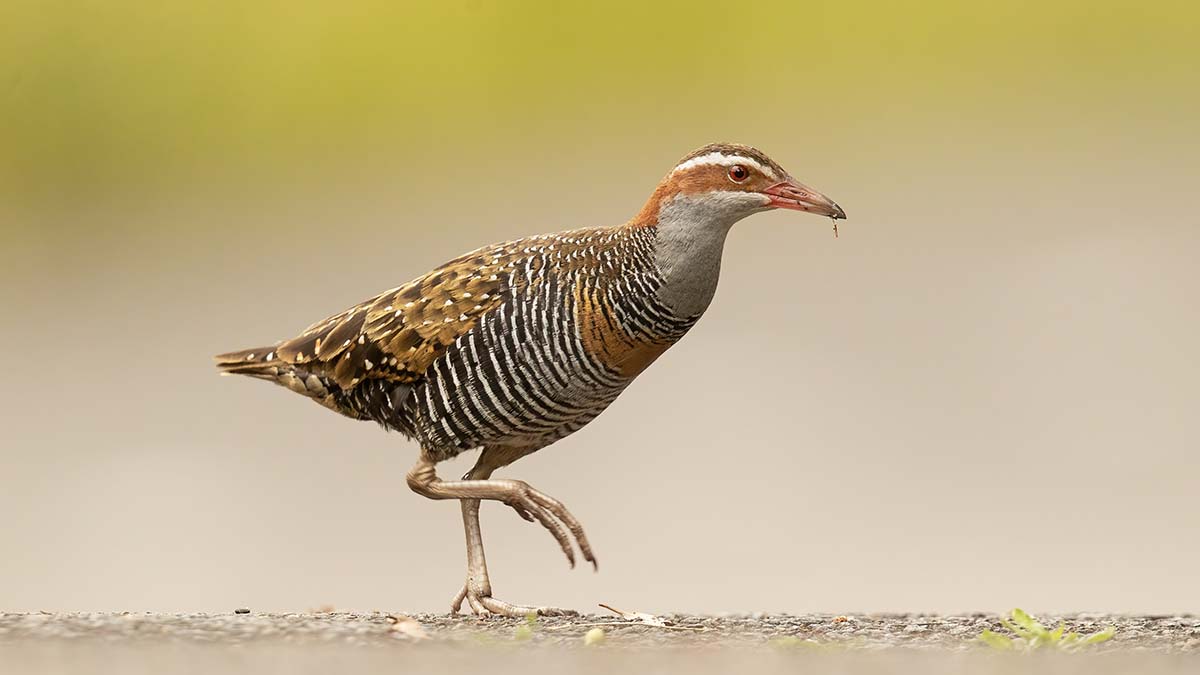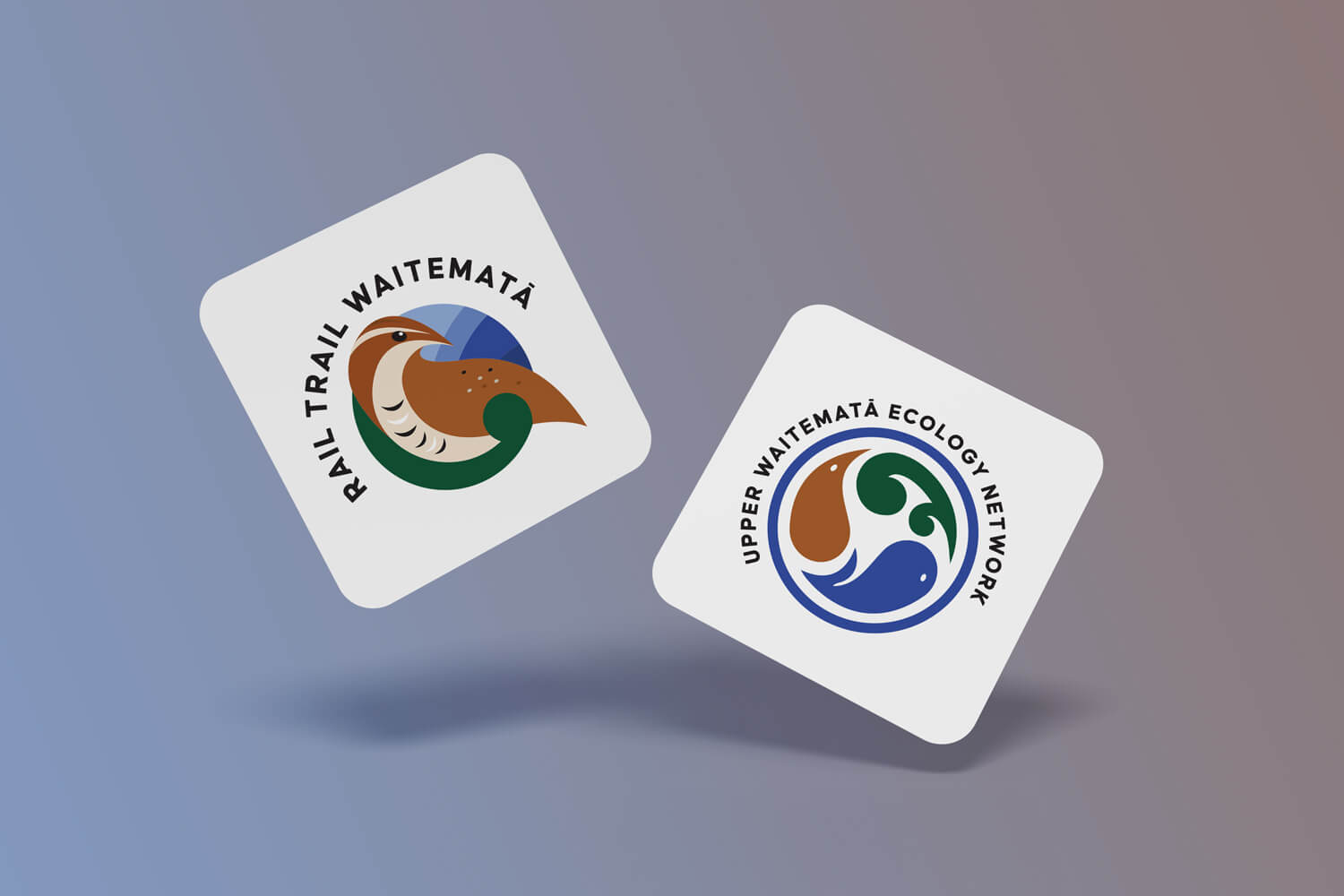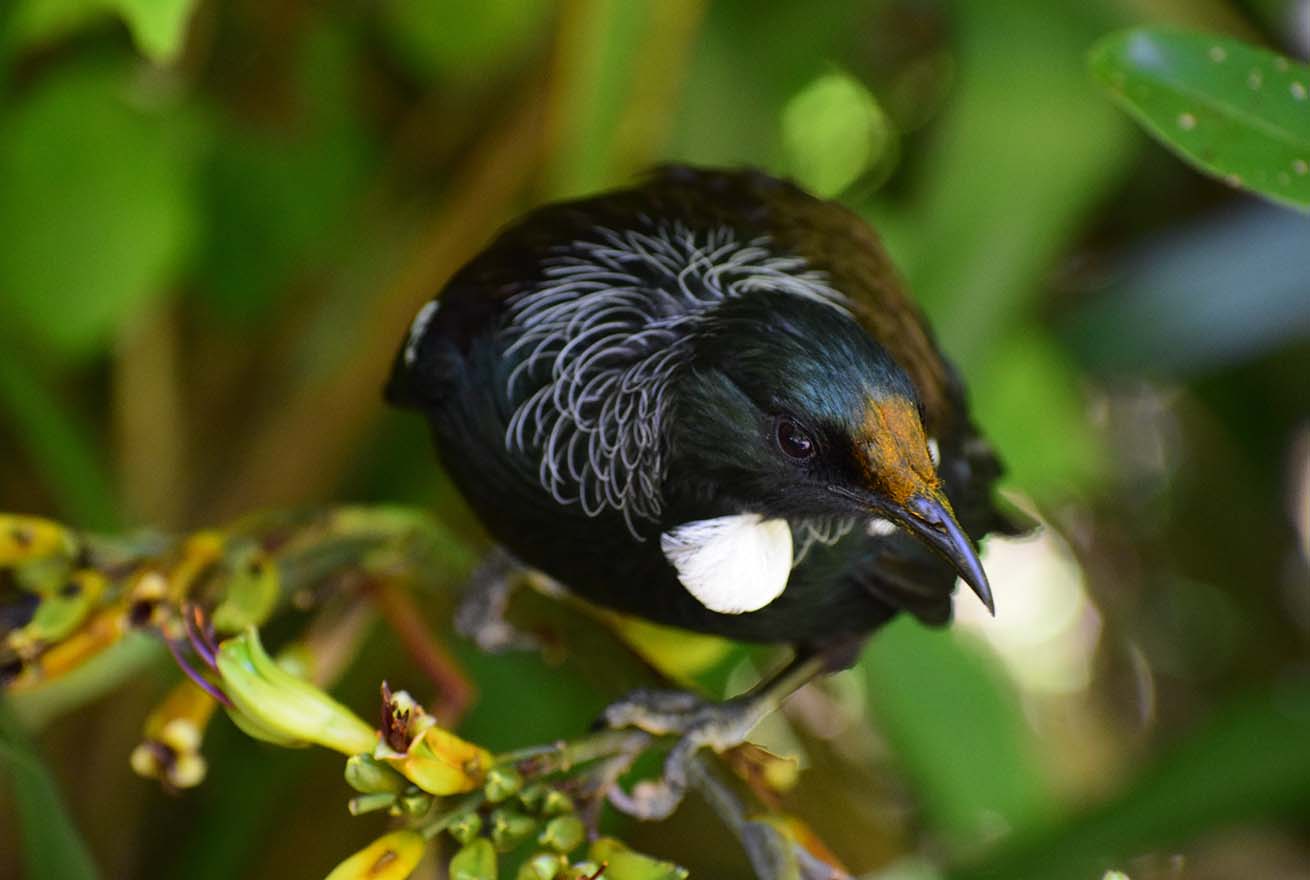This month we had an inspiring chat with Carole, Annette, and Nicola from the Upper Waitematā Ecology Network (UWEN). We just love the work they do. Working collaboratively with community groups and upskilling volunteers across the region, the Upper Waitematā Ecology Network wants to restore the mauri of our ecosystems. Their hands-on initiatives include planting native plants and trees, saving and sourcing precious native seeds and seedlings, helping native birds and forest thrive through predator eradication and environmental weed control, cleaning up our coastline and waterways, and monitoring water quality and bird numbers.
Photo above by Aneta Foubíková on Unsplash
Kia ora, it’s great to talk to you all today. Firstly, can you share a little about the people behind UWEN?
Until recently, we were known as the Upper Harbour Ecology Network and are now the Upper Waitematā Ecology Network (UWEN). We are a collective who care deeply about conservation, birdlife, and restoring our beautiful green spaces and waterways.
Our current community groups and member groups are:
- Sustainable Paremoremo/Kai Rākau
- Living Whenuapai
- Greenhithe Ecology Network/Greenhithe Community Trust
- Herald Island Environmental Group
- Habitat Hobsonville
- Centorian Reserve Group (Albany)
- Restore the Landing (Albany)
- Kumeu Small Landowners
- Pest Free Coatesville
- A Rocha (Unsworth Heights)
- The Legends of the Environment (Hobsonville)
- Kaipātiki Project (both our umbrella and member)
- Forest & Bird Youth
- North Shore Forest and Bird
- North Shore Golf Club
We constantly welcome new groups and have several volunteers that are part of our network but don’t belong to a specific community group. They too make a big difference in their local private and public land.
Who supports you?
We’re supported by Kaipātiki Project who are our Umbrella organisation (and a UWEN member group) and help us in many ways. We also have the support of Forest & Bird North Shore, Forest & Bird Youth, Iwi Hapū and Community Nursery Network (which is a collaboration between Uru Whakaaro and Kaipātiki Project). Finally, we wouldn’t be where we are right now without the support of Auckland Council and the Upper Harbour Local Board. Ultimately, any person or group or company who are trying to do their part and restore the mauri of the environment and care for native species are supporting our cause, so there are a lot of supporters we don’t know about out there!
You’re very connected! How do you support Māori interests and aspirations too?
Supporting mana whenua for the upper Waitematā is a top priority. There are nine iwi groups who have an interest in the upper Waitematā area who are: Ngāti Pāoa, Te Ākitai Waiohua, Te Rūnanga o Ngāti Whātua, Ngāti Whātua o Kaipara, Te Kawerau a Maki, Ngāti Whātua o Ōrākei, Ngāti Manuhiri, Ngāti Te Ata Waiohua and Ngāti Maru. We want to co-design projects together and believe that adopting a Māori worldview is essential to understanding and efficiently restoring the mauri of our natural world and of our communities.
Why was UWEN set up?
The network creates opportunities for us to get together, share ideas and collaborate on landscape-scale projects. Working together means we can streamline our work and share resources and knowledge which saves a lot of time and effort. We can all work towards similar conservation outcomes.
Landscape-scale (also known as ecosystem approach) is a way of managing land by working together at a large scale. Collaborating across landscapes means the public and private sector can achieve greater benefits and success than working in isolation.
How long have you been around?
We started in 2016 when a few locals realised they could have a real impact on restoration and achieve better outcomes if they worked together. They realised that when community groups coordinate actions, they can make a bigger difference.
What kind of outcomes are you working towards?
Bringing back the birds, connecting people to nature, reducing predators and pest plants, restoring balance, regenerating our waterways, mitigating climate change, and advocating for the environment.
Volunteers love planting trees – it’s always the sexy part of restoration. But there’s another part which takes as much time, if not more, and that’s keeping weeds and predators at bay.
What recent changes have happened to the network?
We just changed our name! We used to be called Upper Harbour Ecology Network but are now Upper Waitematā Ecology Network.
Last year we went through a strategic planning process to work out our structure, roles and funding. That’s when we got to employ Carole – who has really got us sorted out!
We’re also excited to become an incorporated society by the end of this year (2021).
In what ways do you advocate for environmental change?
We see ourselves as caretakers of the Upper Waitematā area. We want to restore our land and water environments. We sometimes advocate at a political level, particularly around urban development. We’re trying to make sure nature has her place in these projects. It’s important to have another voice protecting the environment.

Moho Pererū (Banded rail) Photo: JJ Harrison, Wikimedia Commons
What are some of the biggest challenges you’re facing?
We see a wide range of issues. Different locations face different challenges.
Greenhithe is an established community, so we see a lot of pest plants escape from backyards into reserves. We’ve also got lots of little streams that connect with main waterways – they become corridors for rats and other rodents and pest plants.
Also, we need to defend our coastlines.
Over in Hobsonville, we’ve got issues around construction, litter and waste management.
Motorway corridors tend to be a dumping ground for rubbish – people, unfortunately, throw their takeaway packaging out the window.
And if you look at Herald Island, we have erosion – climate change is a big thing we need to confront more and more within the network. Plus, Whenuapai is also part of the UWEN. Whenuapai is rapidly intensifying – from previously being mainly farmland and horticultural to now light industrial, mixed housing and residential. Environmental outcomes need to be considered and made a priority to ensure healthy outcomes for us all.
The Upper Waitematā also has a lot of vacant land that’s just filled with animal pests and weed pests. And that’s become a real problem for us because these lots offer nursery grounds for these pests to thrive and they, in turn, have a negative impact on native plants and native birds. This also increases the impact of climate change. Everything is connected.
And how do you manage these issues?
One thing we do is establish volunteer groups that look after reserves or areas.
We have a team of volunteers – we’re about empowering our community with the positive things they can do in their own backyard.
In Greenhithe, for example, we don’t have the rubbish issues Hobsonville has, and we’ve got a lot of locals who will pick up rubbish on their walks. We have lots of pest plants in the reserves, and volunteers meet weekly to help remove these and restore the native bush areas.
Greenhithe Ecology Network, Herald Island Environmental Group, A Rocha in Unsworth Heights and other places have backyard, community nurseries. We save native plants or grow native plant seeds that later can be planted in parks and reserves.
Volunteers are seeing a real difference in Herald Island since predator control has been in place. The volunteers tell us how incredible and delightful it is to see more native birds coming back – including kingfishers. All that is due to the combined efforts of many local residents (Herald Island Environmental Group volunteers) who set traps and bait stations to keep the predators off the island and save the birds.
We also work with other groups, networks and organisations to provide training opportunities. An example of this is the seed sourcing workshop series we’re currently involved in, alongside Uru Whakaaro and Kaipātiki Project (Iwi, Hapū, Community Nursery Network). This seed-sourcing training enables volunteers and residents to learn how to collect seeds and plants in a respectful and culturally safe way. Once trained, they can also help us increase the diversity of plants within reserves and upskill residents. When you give people more power to look after their own backyard, they gain a better understanding of what to do and why it’s important, so they can take meaningful action and feel part of the solution.
What’s your biggest goal… say if there were no funding and resourcing limits?
Native trees everywhere! An abundance of birds. Clean waterways and connected people. People who really like to go outdoors and respect their own backyards.
Also integrating a lot of indigenous knowledge, Te Ao Māori, to really learn more about our environment and how we can best care for it – we see our role as a contribution towards kaitiakitanga (guardianship or protection).
We’d also like to see a more progressive and environmentally friendly approach in policy design. We’re seeing a lot of development that has very little regard for our waterways and our green spaces. We need these spaces to enhance our biodiversity. And we’ve learned from Covid lockdowns that people need to be away from concrete and enjoy nature.
We need a forward-thinking approach to tackle climate change and address development and planning issues.
Do you feel our communities are engaged in these issues and passionate about making a difference?
We have a strong team of volunteers but there’s a gap for engaging our young people, our rangatahi. It’s important to give teenagers a place where they can express their needs and aspirations regarding environmental matters – what do they want their neighbourhoods to look like? What will inspire them to lead projects? It’s important we ask them how they’re feeling rather than just tell them what to do.
That so many of our teenagers don’t feel a part of our work is something we are working on.
The parks that we’re seeing come up now are tiny – pocket parks. They have swings and slides for young tamariki, but they don’t do anything for our young adults. They need more space to ride their bike, they need more land.
What are the major projects that you’re working on right now?
We’re working on a pilot project to restore the waters around the Waitematā.
Then there’s the Community Nurseries Project where the main objective is to increase the genetic diversity and type of plants in reserves. When forests and parks lack genetic diversity, they are more vulnerable to diseases and pathogens, and that’s what we want to avoid.

The third main project is the Rail Trail Waitematā which Two Sparrows gifted us the logo for! This project is all about helping our manu (birds) thrive through organised coastal predator control. We want to bring back Moho Pererū to the coastal areas of the Upper Waitematā. For that to happen we need to make it a safe place by eradicating predators such as stoats, rats and possums! Moho Pererū, or the NZ Banded Rail, is an umbrella species, so if we make our area safe enough for them to thrive many other birds will be able to thrive too.
Did you know that just one water bottle in the ocean can kill a whale? We can play our part in preventing this by clearing up bottles and other litter.
On the 10th of April 2022, we’re having an event – the Lucas Creek clean up. It was meant to be held in November, but we had to postpone it given the circumstances. Lucas Creek clean up is about bringing people together, while spending some quality time in nature collecting the debris around Lucas Creek and doing our part.
Everyone is welcome to the event. All you need to do is register on Facebook. Please keep in mind that most of the clean up is on kayaks so you may want to bring a SUP, kayak, boat, or canoe if you want to have the most fun, but you can clean up from the land as well.
We’re also part of the Environmental Weed Coalition.
And what areas does UWEN cover?
We’re growing. We cover all the area around the upper part of the Waitematā Harbour, from Greenhithe and Albany in the east to Paremoremo and Coatesville in the north, to Whenuapai and Hobsonville in the west and West Harbour in the south, so it’s mostly the Upper Harbour and Rodney Local boards. We’re always welcoming new groups.
How can people get involved and support your great mahi?
We’re always looking for more volunteers. If anyone has any ideas or wants to start a group – if they have a creative idea that could be done within our reserves or parks that would benefit our birds, our water, people and our environment, we’re always ready and happy to connect.
Please go on our website and complete the contact form or you can email Carole:
On the website you can also connect directly with the group in your local area.
We are actively looking for more volunteers in Albany, Albany Heights, Lucas Heights, Paremoremo, Whenuapai, Hobsonville or anywhere else in the Upper Waitematā. No matter how much or how little you know about nature and conservation, we want you on board! We can provide you with training along the way.
What type of skills do you look for from your volunteers?
Volunteers can be anything from photographers to artists, to trappers, to health and safety specialists, to bakers for our morning teas, social media people, treasurers, builders, divers, arborists, gardeners and more.
Ultimately, we’re here to connect humans with nature so that we can all thrive.
Two Sparrows worked with the Upper Waitematā Ecology Network to develop a new logo for them. We also created a logo for Rail Trail Waitematā.
